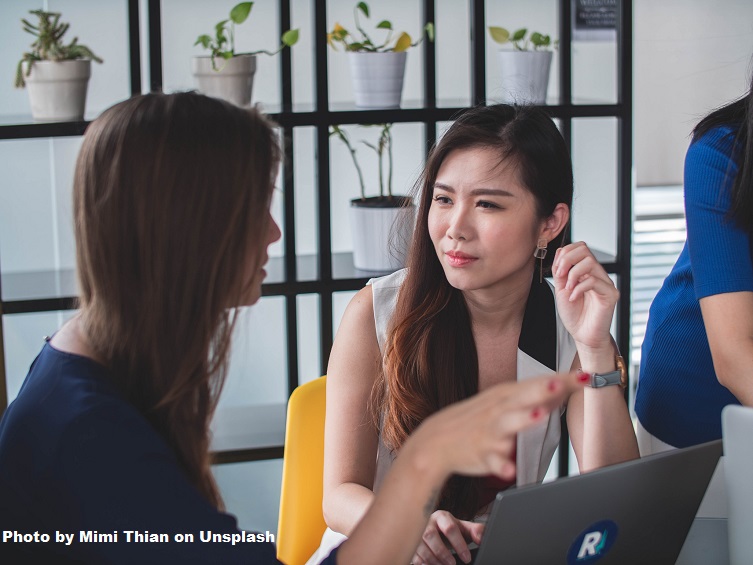How Teachers Build Partnerships with Parents
The concept of forming a pedagogical partnership as a way of organizing the pedagogical process is not new. In pedagogy, the theory of collaboration grew out of works and practice.
The most important role in the formation of relationships between parents, school, and children and a century ago, and at present, is given to the teacher.
Cooperation is revealed through the partnership of parents, children, and the teacher, and we consider partnership as a special type of joint activity between the subjects of the educational process, characterized by trust, common goals and values, voluntary and long-term relationship, as well as the recognition of mutual responsibility of the parties for the result of their cooperation and development.
Based on this definition we developed a model of the socio-pedagogical partnership of our class, that is, the ideal to which we will strive in the process of cooperation.
graphic created by Karen J. Frost
We assumed that this model should be based on the following principles:
- Voluntariness. We will try to achieve any goals if we want to, so the partnership should be voluntary.
- Mutual respect. "If I don't respect you, why should you respect me?"
- Trust. It's important to remember that "living example" can be more eloquent than many words. And the moment words differ from deeds, trust is lost. It is possible to repeat many times to children that it is necessary to cross the street only on a crosswalk, and then once to cross in a wrong place and children will see it ... all! Children begin to think that adults are tricking them. Faith is lost...It's the same with adults.
- Responsibility. Each participant of the project has to realize his/her important role in the project and to start with himself/herself - responsibility is realized in this.
The goal: Creation of conditions for the consolidation of the children-parents team through a partnership between parents, children, and the teacher.
Objectives:
- To study the contingent of parents and children of the class, their satisfaction with the educational process, the educational institution, the teacher.
- Definition of mutual usefulness of participants, identification of readiness to work together.
- Planning and carrying out jointly with parents of events on consolidation of children-parents team.
- Feedback on the collaboration in the form of a short essay (If this type of activity is difficult, you can ask for help with essay).
- Encouragement of active participants.
Hypothesis: a partnership between parents, the educational organization represented by the teacher, and the children's team can be built if duties are distributed between the participants, rights are given to them and responsibility for the result of the activity is shared.
https://unsplash.com/photos/Fw8byh9ygAc
Stages:
- Preparatory stage. At this stage, there is a study of the children-parents team through questioning, identification of parental interests, disclosure of parental potential, identification of readiness for joint work, determination of mutual usefulness of participants, the study of each other's capabilities (resources), formation of a parental asset.
- Main stage. Planning of joint activity. Carrying out of events, analysis of activity, encouragement of active participants. At this stage the key concept of the general contribution - that is, division of responsibility for certain sides of joint activity. But the desire of parents to make such a contribution arises only when they have confidence in their educational institution.
- The final stage. Summarizing the results of joint activity. Rewarding of active participants.
Forms of joint work with parents:
- Involvement of parents in celebrations, master classes, communication hours.
- Involvement of parents in the organization of excursions.
- Involvement of parents in socially useful work.
- Individual consultations for parents.
- Classes for parents.
Cooperation between the family, represented by the parents, and the school, represented by the class teacher, will always be relevant and in demand. If the teacher manages to establish a partnership with the parents from this union, undoubtedly, both sides benefit, but most importantly, the children benefit. But how do we make sure that the relationship with parents is a reciprocal movement, coinciding in its orientation, goals, and forms? Very simply - they must be developed together.
Cooperation develops most successfully if both sides realize the necessity and value of interaction and trust each other. Qualified help that parents expect from the school, aimed at their self-education and education of their children, increases the level of trust of the family not only to specific teachers but also in the educational organization. And this is an important factor in building partnerships with parents.
An important psychological principle of interaction in the provision of any services, including educational services, is that the consumers of the service of the employee of the organization will always be evaluated by the lowest point of interaction. And in it, the personal responsibility of each teacher for the image of the whole organization is manifested. It is implemented in the following way. The parent interacts with the teacher, they have a full understanding and the parent thinks, "What a wise person, a good and experienced teacher works in this school." And another option. Parents can't build a relationship with the teacher, the teacher doesn't meet them halfway, doesn't try to help solve the problem. Parents, in this case, think: "This teacher is bad, well, what else to expect from this school, there are only rude people and dilettantes working here...". In other words, in terms of psychology, the parent as a consumer of services feels when the relationship is good - a good teacher, the relationship is a bad - bad school.
So it becomes clear that at the heart of any interaction are benevolent, open, trusting interpersonal relationships. Each party must make an effort in the process of rapprochement, and the actions of each collaborator will determine whether or not there will be a partnership in a given classroom.
1. Building a system of interaction with a parent
Create stages of interaction with the parents of your students. The first stage is informing. Parents choose a school and an educational program, accept the school rules and values. Choosing values is followed by choosing a role and degree of responsibility for the child's results. The second stage is the involvement of parents-co-educators of educational programs. They are ready to share the values and requirements of the school and to accompany the child in learning. The third stage is elective courses created and led by parents of students. We organize meetings and round tables where parents gather, we necessarily take their opinion into account, the evaluation of the school's activities and parents' suggestions are very important to us. At the last stage of the system of interaction, parents become independent experts who have established themselves in their profession, have a huge baggage of knowledge and practical skills that they are ready to share with their children.
2. Individual map of the child's development
Record in the individual card of the student all basic documents which record his achievements and work within the school: a diary of achievements for each quarter, key works in subjects, qualitative characteristics, results of participation in competitions, experience in social activities. Parents may review the card at any time and assist in solving their child's educational and communication problems.
3. Parents as co-creators of educational programs
Involve parents in educational activities of the school where they can talk about their profession, life, and educational experiences. This is an opportunity to share their experiences in both education and career with their children, to present their profession, and to teach their children something professionally. Parents can act as academic advisors and help in fostering a research culture or learning about the historical and cultural centers of their hometown.
4. Letters to Parents
Letters to parents were originally conceived as a supplement to the quantitative assessment of student achievement. The teacher informs the parents about the child's life at school, his/her interactions with classmates, learning outcomes, and identifies tasks for the future that need to be solved. The parent receives a document describing their child's activities, which includes information on his or her academic performance as well as personal characteristics. Parents respond to the letters, there is some reflection, in each answer, you can see that parents share the tasks set by the teacher.
5. The school - the center of social activity
Create centers of interaction between parents and teachers at school. You can organize roundtables, meetings, and conferences that highlight issues of modern education. In this way, you can get relevant feedback on those issues that concern the education of children. At the events, teachers report on the work done, and parents act as moderators of the events. The educational program is not born by the pedagogical team, but by the joint efforts of alignment of interests.
In conclusion effective communication, mutual respect and mutual desire to work for the sake of quality education are essential for productive cooperation between parents and teachers. Never give up and may you succeed!
Guest Blogger
Karen J. Frost studied child psychology and worked with children for a while. She is a freelance and essay writer now. She is happy to meet such a plot twist that her life offers to her. She is an educated person ready to share her thoughts and ideas with other people.
Search Internet4Classrooms










